Essential Insights
-
Not every token can be liquidated straight away. Airdropped tokens or lesser-known ones may not have enough liquidity, or in some instances, could even be fraudulent. Always conduct due diligence before attempting to cash out.
-
Conversion and bridging might be necessary. To sell your tokens, you may need to convert them to ETH or stablecoins and transfer them to the Ethereum mainnet.
-
MetaMask includes options for fiat transactions. You can utilize the MetaMask Portfolio to sell ETH directly, but be aware that third-party providers typically require KYC verification.
-
Alternative options exist without KYC. Platforms like Bisq or LocalCoinSwap enable trading without identification, but these carry a higher level of risk and require careful consideration.
There are various situations in which you might have a collection of different cryptocurrencies stored in your MetaMask wallet.
Perhaps you work in the Web3 space — as a developer, copywriter, or designer — and were compensated in your client’s native token.
You might be a member of a Bitcoin mining pool, occasionally receiving rewards directly into your wallet.
You may also be engaging in yield farming in decentralized finance (DeFi), generating annual percentage yield (APY) from your locked assets. Or maybe you simply completed a few tasks in SocialFi and received community tokens through an airdrop.
Regardless of how it happened, you now have cryptocurrency in your MetaMask and want to convert it into cash.
This guide will explore the various methods available to sell your crypto and withdraw those funds directly to your bank account or even as cash — whether through standard KYC procedures or opting for more private, non-KYC alternatives.
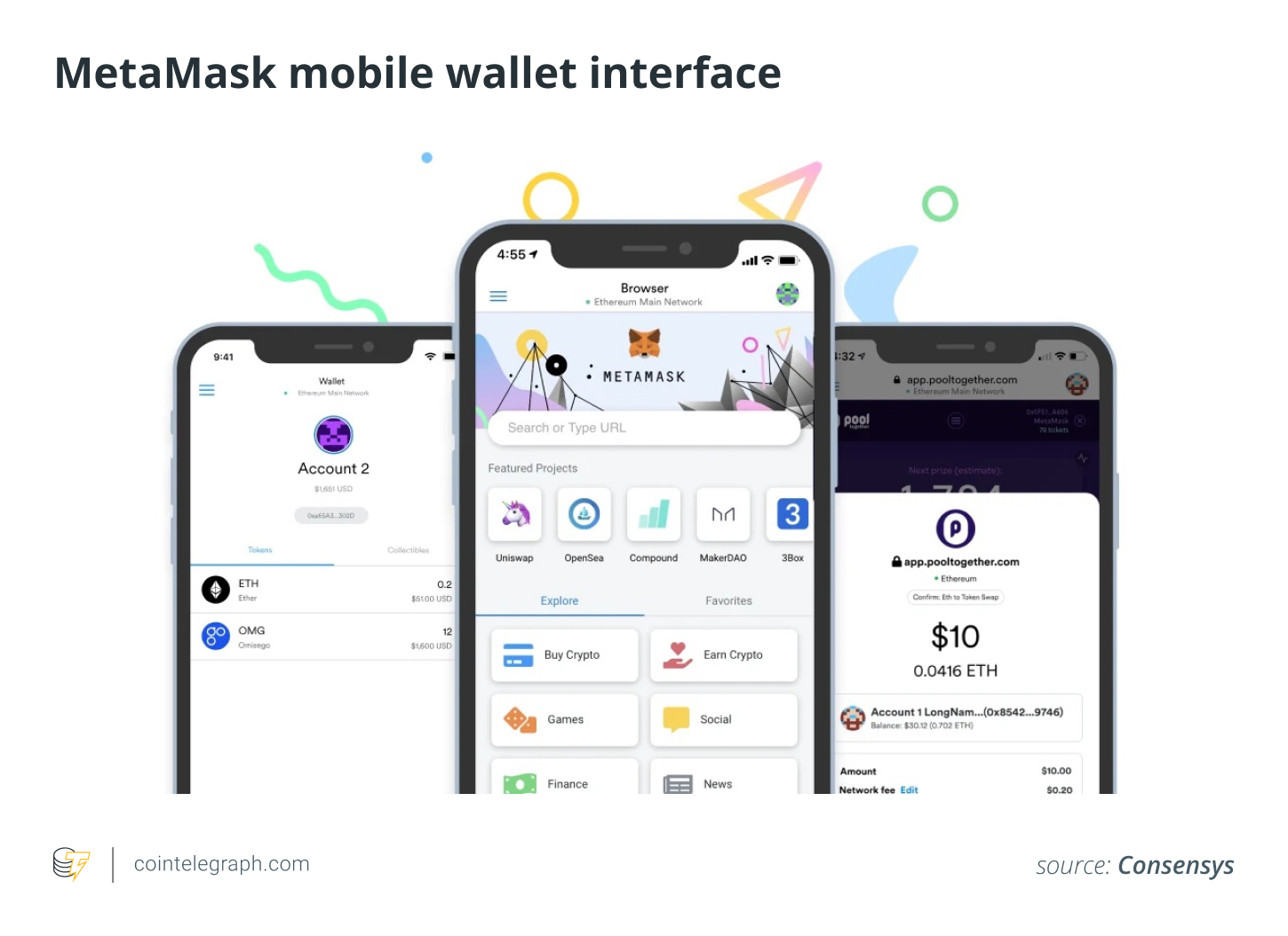
Important Considerations Before Selling Tokens on MetaMask
Before you can convert your tokens into cash, there are key steps to address in MetaMask because “not all tokens are created equal.” It isn’t always as straightforward as pressing a “sell” button — particularly if you’ve recently received tokens from an airdrop or a lesser-known project.
1. The reason some airdropped tokens cannot be sold yet
Just because a token appears in your wallet does not mean it’s immediately sellable. Many airdropped tokens are not listed on exchanges. This implies there’s no market to sell them — at least not yet. While there may be a quote tied to the token, it doesn’t mean you can realize that value right now due to a lack of buyers or liquidity. So, while it’s exciting to receive free tokens, they may remain inactive in your wallet for some time.
Interesting fact:If you encounter a “100% sell fee detected” notification on a token, it’s likely a scam. Fraudsters may airdrop these tokens, hoping you’ll attempt to sell or interact with them. When you do, the smart contract could take the entire amount, leaving you empty-handed. Even worse, some links lead to counterfeit decentralized applications (DApps) that prompt you to “claim” or “unlock” the tokens. Allowing your wallet to connect or signing a transaction can enable scammers to access your real assets.

2. Adding tokens that may be missing from your wallet
There are instances where tokens you receive might not show up in MetaMask initially. This doesn’t mean they aren’t there — it merely indicates that MetaMask does not recognize them by default. You’ll need to manually add them by retrieving the token’s contract address (which can typically be found on the project’s official website or on Etherscan) and importing it into your wallet. After this step, your balance should display correctly.

If you’re looking to receive any asset other than Ether (ETH), the “Import Tokens” option allows you to manually add any missing tokens to your asset list.
3. Preparing to swap or bridge
Even when your tokens are visible in MetaMask and have technical value, that doesn’t necessarily mean you can sell them for cash right away. Many smaller or newer tokens lack direct fiat trading pairs, meaning you won’t be able to convert them straight into dollars or euros.
To bypass this limitation, you’ll often need to exchange them for something more liquid, like ETH or a stablecoin such as USDC, which are typically more supported by fiat off-ramps.
In some situations, your tokens could be on a different blockchain — such as Arbitrum, BNB Chain, or Polygon — while most fiat withdrawal options are only available on the Ethereum mainnet. In those cases, you’ll need to bridge your tokens over to Ethereum before selling them.
A practical way to manage these tasks — swapping and bridging — is to use platforms that integrate both functions into one seamless process. For instance, with Symbiosis.finance, you can swap a token on one blockchain and receive a more widely accepted token on Ethereum in a single transaction. This can streamline the process and reduce the potential for user errors when navigating various tools.
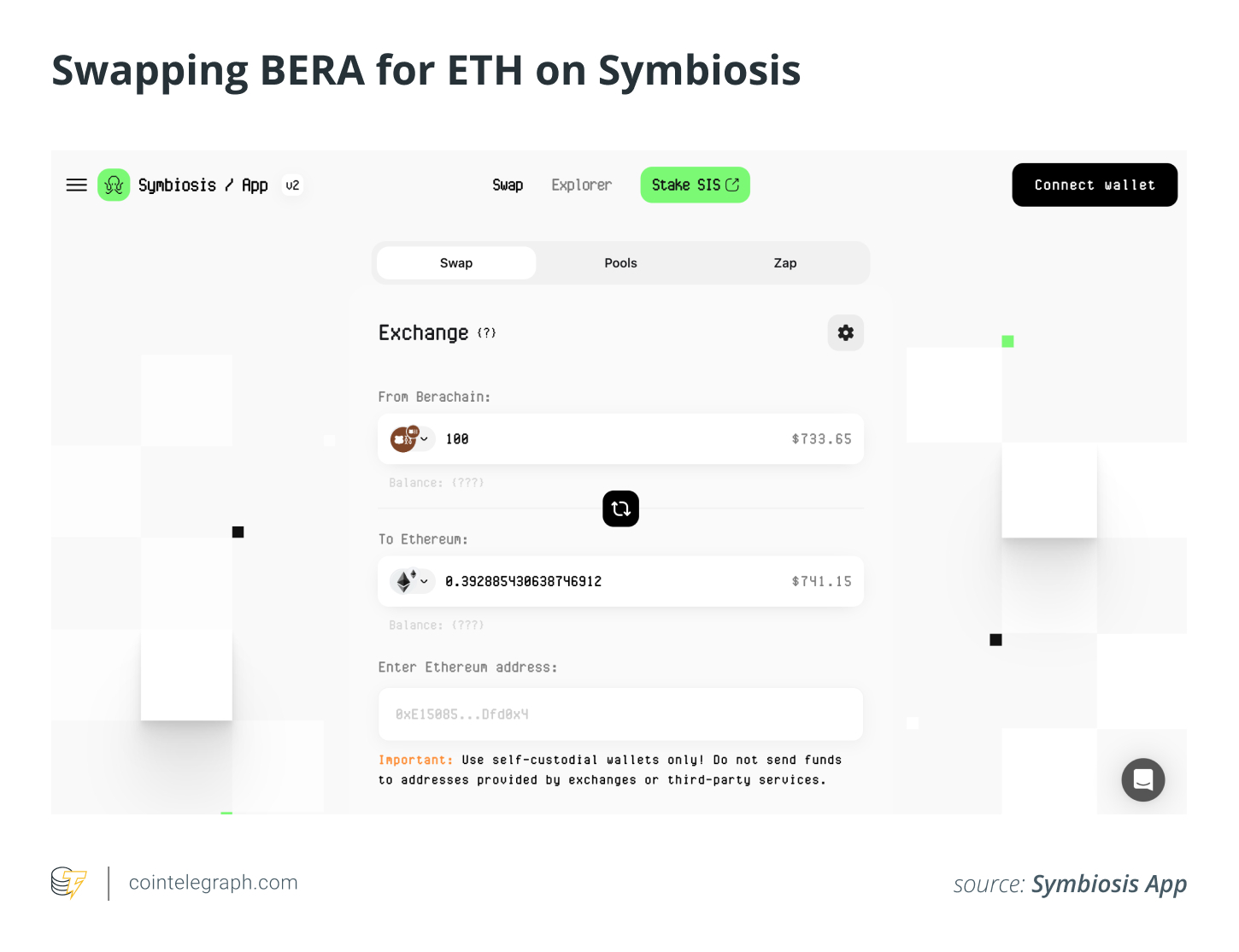
How to Sell Crypto Using MetaMask
The easiest method to sell crypto that you have in MetaMask is by using the platform itself. Here’s a step-by-step guide:
-
Access MetaMask Portfolio: In your MetaMask extension or app, click the “Buy & Sell” button. This will redirect you to the MetaMask Portfolio site, allowing you to manage all your assets and initiate the sale process.
-
Initiate the sale: Click on “Move crypto” at the top of the page and select “Sell” from the dropdown menu.
-
Select your region and currency: MetaMask will require information on your country of residence and your preferred fiat currency to ensure you see accurate provider options and payout methods available in your area.
-
Input sale amount: Choose Ether and indicate the amount you wish to convert.
-
Select a payout method: Decide where you want the fiat funds to be sent. Depending on your location and provider availability, options may include a bank account, PayPal, or other methods.
-
Review offers: MetaMask curates offers from several third-party providers (like MoonPay, Transak, Sardine, etc.), displaying real-time exchange rates, fees, and estimated payout timelines. Take a moment to evaluate and select the best option for your needs.
-
Finalize the sale: After selecting a provider, MetaMask will guide you through the process of sending the crypto. You’ll confirm the transaction in your wallet, and the funds will be sent to the provider, who will handle the fiat payout.
Keep these two important points in mind when using the MetaMask application:
-
First, while the app may not request KYC details, the third-party providers will, so gather your documentation beforehand.
-
Secondly, the selling feature on MetaMask only allows transactions involving ETH on the Ethereum mainnet. This is where bridging will be necessary, as mentioned earlier.
Withdrawing Crypto via Centralized Exchanges
If you prefer to cash out your cryptocurrency via a centralized exchange, Coinbase is a well-known option. It’s user-friendly, supports fiat withdrawals, and accommodates a diverse range of assets. However, keep in mind that you will need to complete KYC verification before accessing your fiat.
Follow these steps to execute the process:
1. Transfer crypto from MetaMask to Coinbase
First things first: you need to transfer your funds from MetaMask to Coinbase.
-
Log into your Coinbase account and click “Send & Receive” at the top.
-
Switch to the “Receive” tab, select the cryptocurrency you’re sending (like ETH or USDC), and copy the wallet address provided by Coinbase.
-
Ensure the network matches — if you’re sending ETH, it should be on the Ethereum (ERC-20) network.
Now, open MetaMask:
-
Click “Send,” paste in the Coinbase address, and specify the amount you want to transfer.
-
Double-check the network — sending to the incorrect one may result in loss of funds.
-
Click “Confirm,” and your cryptocurrency should appear in Coinbase shortly thereafter.
2. Convert crypto for fiat on Coinbase
After your funds are successfully received in Coinbase, it’s time to cash out.
-
Navigate to “Buy & Sell” at the top and switch to the “Sell” tab.
-
Select the cryptocurrency you just deposited and decide how much you wish to sell.
-
Specify where you want the money to go — such as your linked bank account, PayPal, or your Coinbase balance.
-
Review the details, including fees, and then click “Sell.”
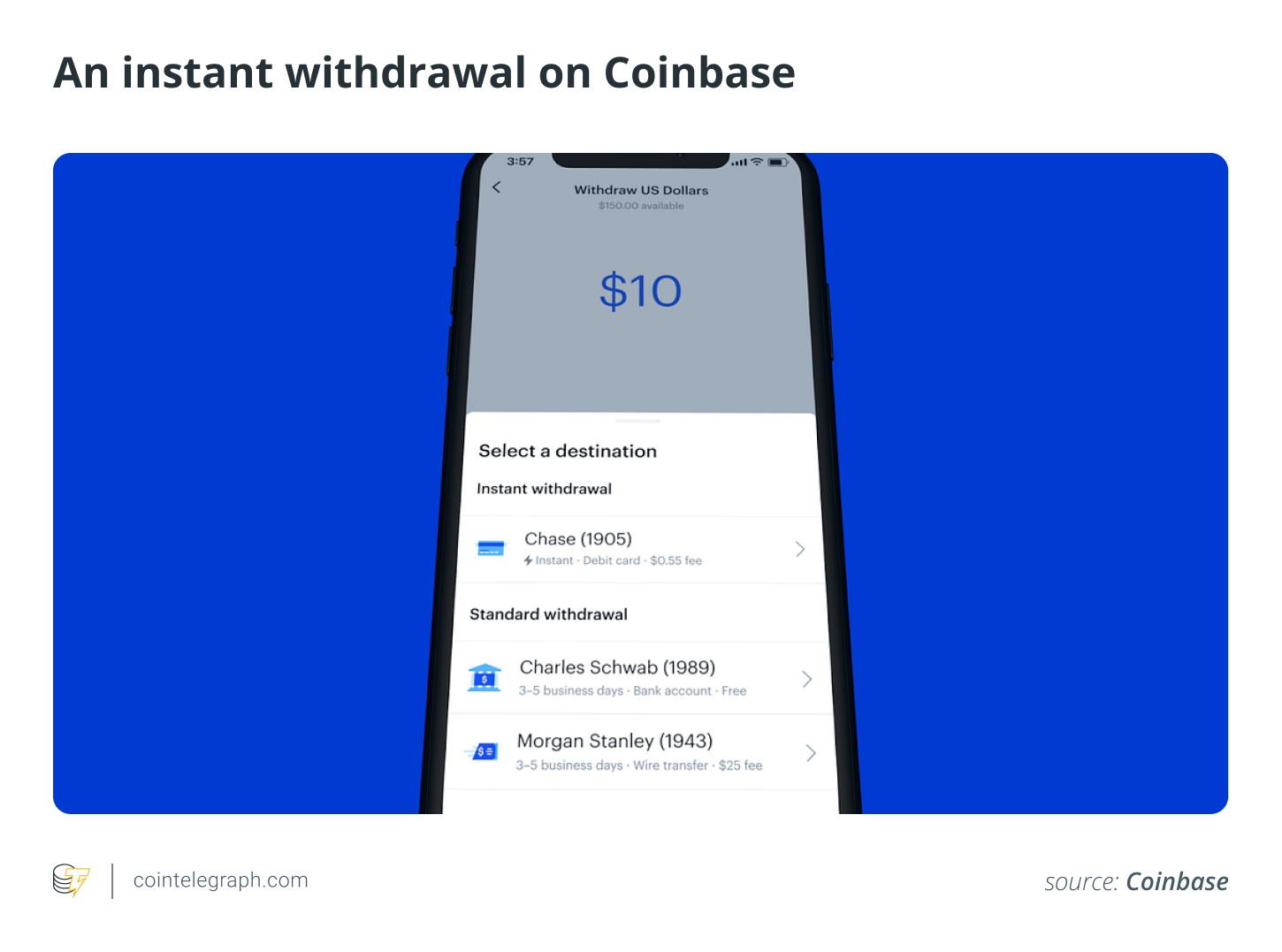
Interesting fact: When withdrawing through centralized exchanges, be mindful of minimum withdrawal thresholds and associated fees. Make sure these details are acceptable to you before committing to this method.
Peer-to-Peer with KYC
In the context of peer-to-peer (P2P) transactions, you are not selling your cryptocurrency to an exchange. Instead, you’ll be selling to another user. You can select a buyer based on their offer and preferred payment method (such as bank transfer, Revolut, Wise, etc.). Once you receive the payment, you’ll release the cryptocurrency to them. The platform will hold your crypto in escrow throughout the transaction, ensuring that no party can abscond with funds.
Like with centralized exchanges, you’ll be required to go through KYC before you can trade this way.
Selling via P2P on Binance
Head over to Trade > P2P.
-
Select the coin you want to sell and review the list of available buyers.
-
Choose an offer, confirm the order, and wait for the buyer’s payment.
-
Once you confirm the payment is in your account, release the crypto from escrow.
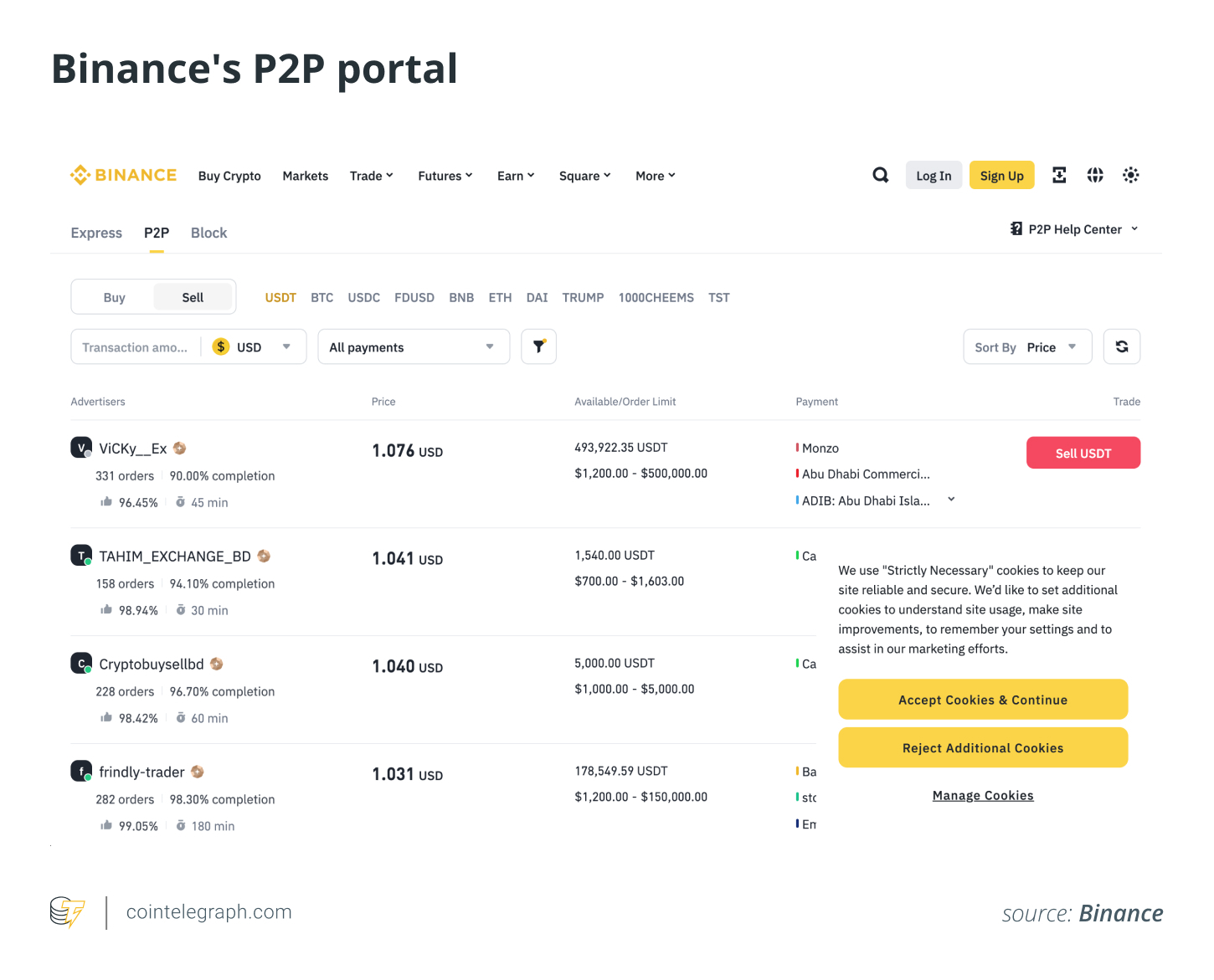
Interesting fact: Some peer-to-peer (P2P) crypto exchanges provide a “cash by mail” option, allowing users to send physical cash through postal services or couriers for transaction settlement.
Cashing Out of Your MetaMask Wallet Without KYC
If you’re seeking to convert crypto from your MetaMask wallet into fiat without going through KYC verification, there are still several viable options available.
Decentralized P2P platforms enable you to trade directly with other users, similar to their centralized counterparts but usually with minimal or no KYC requirements.
-
LocalCoinSwap: A non-custodial peer-to-peer marketplace that accommodates a wide array of cryptocurrencies and payment methods, including cash. It offers escrow services and focuses on user privacy.
-
Bisq: A fully decentralized exchange supporting various cryptocurrencies, including Bitcoin and Monero (XMR). It operates on a peer-to-peer protocol and does not require user accounts or KYC.
However, without KYC, it falls upon you to assess the credibility of the person you’re trading with. Review their reputation, check any available trading history, and adhere to platform safety guidelines at all times.
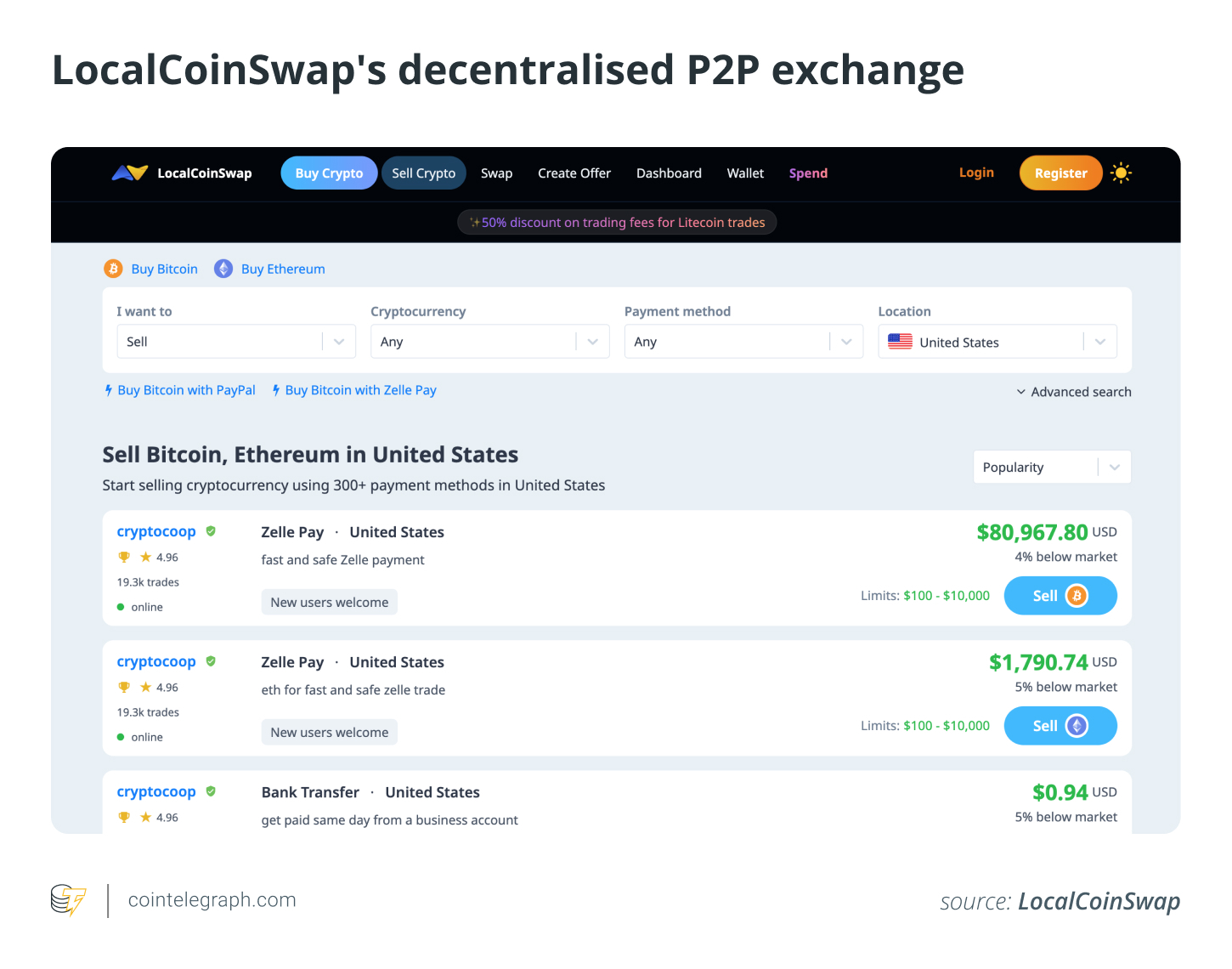
Utilizing Cryptocurrency ATMs to Withdraw From MetaMask
Withdrawing funds from your MetaMask wallet using cryptocurrency ATMs — often referred to as Bitcoin ATMs — is another method to convert digital assets into cash. Here’s how to proceed:
-
Find a cryptocurrency ATM: Start by locating a cryptocurrency ATM near you. Websites like CoinATMRadar provide comprehensive listings of Bitcoin ATM locations worldwide, along with the services and cryptocurrencies they support.
-
Prepare your MetaMask wallet: Ensure that the cryptocurrency you wish to withdraw is accepted by the ATM. Bitcoin ATMs primarily support Bitcoin (BTC), so you may need to utilize a decentralized exchange (DEX) to swap your existing tokens for BTC within your MetaMask wallet. Be mindful of transaction fees and exchange rates during this process.
-
Start the withdrawal: At the ATM, select the option to withdraw cash. The machine will prompt you to specify the amount you wish to withdraw and provide a QR code representing the ATM’s wallet address.
-
Transfer funds from MetaMask: Using your MetaMask wallet, scan the QR code provided by the ATM to ensure you input the recipient address correctly. Enter the exact amount of cryptocurrency required and confirm the transaction. Keep in mind that network congestion can influence transaction times.
-
Collect your cash: Once the blockchain confirms the transaction, the ATM will dispense the equivalent amount in cash, less any applicable fees. This process may take anywhere from a few minutes to longer, depending on network conditions.
When using crypto ATMs, be prepared for very high fees, and while small transactions typically don’t require KYC, larger withdrawals might still necessitate it.
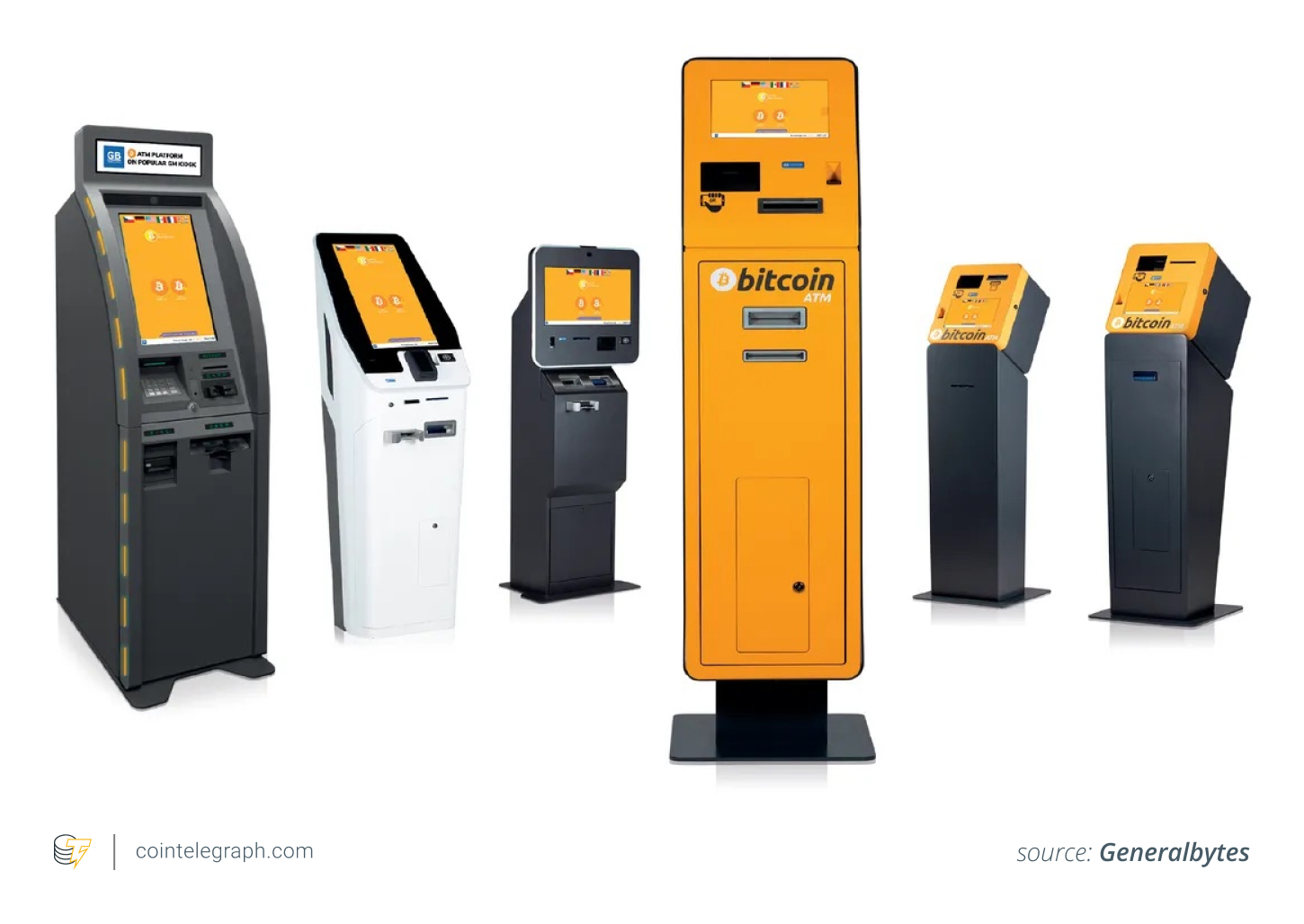
Are Cryptocurrency Transactions from MetaMask Taxable?
Taxes may not be the most thrilling subject, but they’re vital when converting crypto from a MetaMask wallet to fiat. Selling cryptocurrencies, whether through MetaMask, exchanges, or P2P deals, might constitute a taxable event, and it’s important to understand the relevant regulations.
Selling crypto equals potential tax implications
In most jurisdictions, including the US, selling cryptocurrency for fiat (like US dollars, euros, etc.) is treated similarly to selling property. That means if you acquired ETH for $1,000 and later sold it for $1,500, you’ve created a $500 capital gain — generally subject to taxation.
Even trading one crypto for another (such as ETH for USDC) can incur similar tax responsibilities, even if no fiat is exchanged. So the taxable actions go beyond merely cashing out; any trade can require reporting.
To ensure compliance, maintain a record of:
-
The timeline of your asset purchases and sales
-
The quantities involved in both buying and selling
-
The fiat value at the time of each transaction
-
Any fees incurred throughout the process.
This documentation simplifies your life during tax season — or when your accountant gives you that knowing eye.
Familiarize yourself with local regulations
Crypto laws differ from one place to another. Each nation has its own perspective, and even within a single country, regulations can fluctuate based on your use of crypto.
For example, in the US, the act of selling crypto might fall under capital gains tax rules or money transmission regulations, based on how you are moving the funds. Other nations may adopt more lenient or far stricter approaches.
Here’s what to do:
-
Research your local tax regulations regarding cryptocurrencies (even if they seem ambiguous or outdated).
-
Stay updated — laws are changing rapidly.
-
If you’re uncertain, consult a professional. A knowledgeable accountant or legal advisor can guide you to avoid unwelcome surprises.
Even if you are utilizing non-KYC methods or decentralized platforms, tax authorities may still anticipate a full disclosure. Being proactive will spare you stress down the line — and may even save you money.
Happy cashing out!
